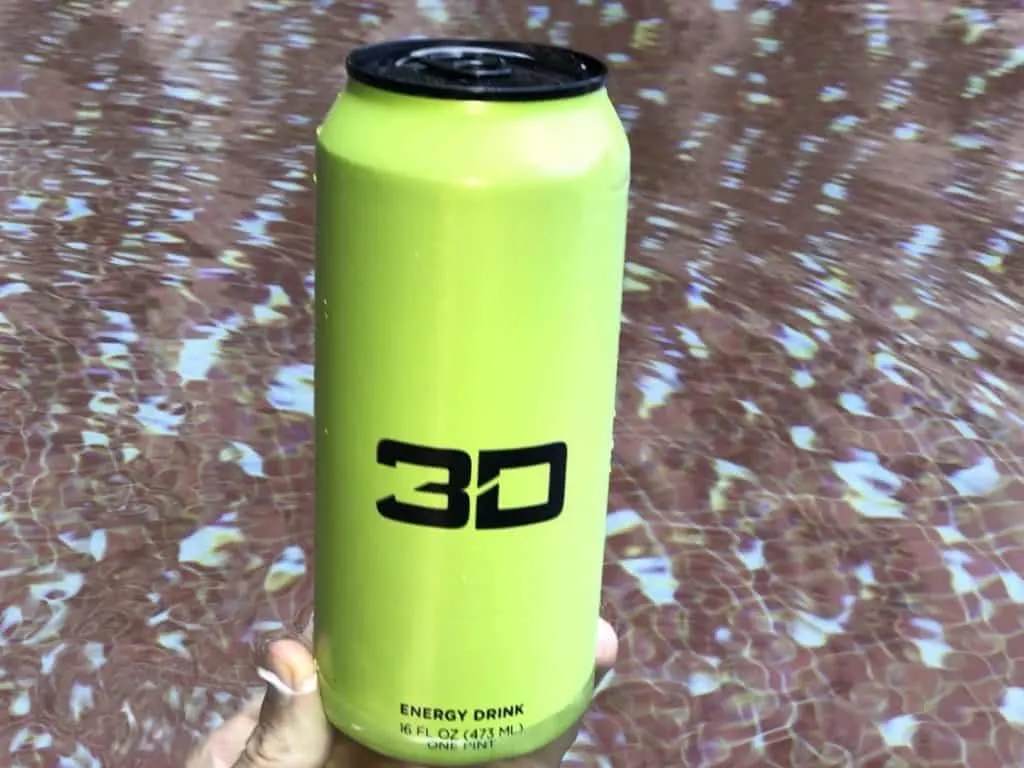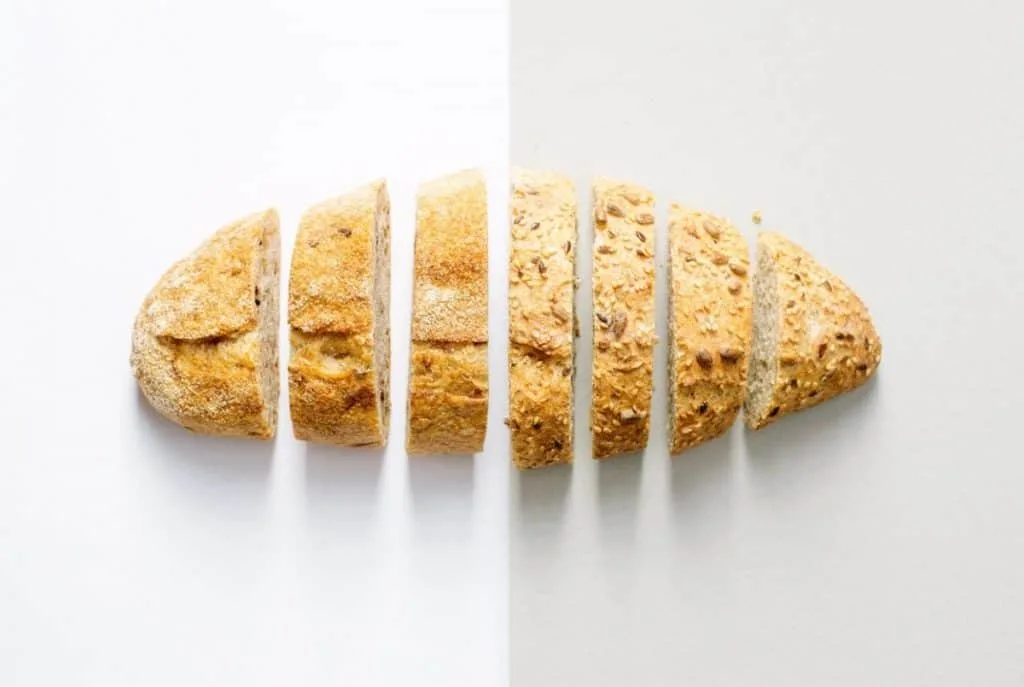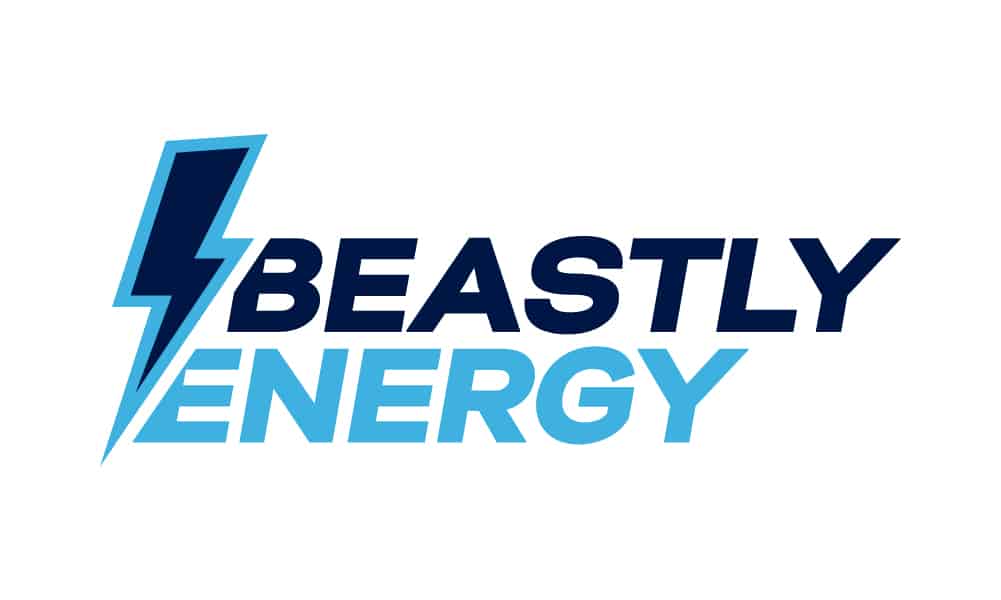3D Energy Drinks are good to pick up whenever your energy levels need fueling, what with 200mg of caffeine in them, they’ll surely keep you awake.
But what if you’re on a gluten-free diet but still need 3D Energy as your energy booster? Can you still drink them? Are 3D Energy Drinks gluten-free?

The simple answer is yes. You can still drink 3D Energy even if you cut gluten from your diet. According to the official site, 3D Energy drink is gluten-free.
Keep reading if you’re interested in a deeper dive.
Contents
3D Energy Ingredients

To know whether 3D Energy can sneak its way into your gluten-free diet, let’s take a look at its ingredients.
The Celiac Disease Foundation says it’s important to get a thorough look at a product’s ingredients list to see if there’s an ingredient that may contain gluten.
Here’s a list of everything you can find in 3D Energy drinks:
- Carbonated Water
- Citric Acid
- Erythritol
- Taurine
- Sodium Citrate
- Natural and Artificial Flavor
- Caffeine
- Sucralose
- Sodium Benzoate
- Potassium Sorbate
- Panax Ginseng Root Extract
- L-Carnitine Tartrate
- Gum Acacia
- Acesulfame Potassium
- Niacinamide (Vitamin B3)
- D-Glucuronolactone
- Inotosil
- Sodium Chloride
- Guarana Seed Extract
- Calcium D Pantothenate (Vitamin B5)
- Pyridoxine Hydrochloride (Vitamin B6)
- Cyanocobalamin (Vitamin B12)
So far, there haven’t been any reports of allergies being triggered by drinking 3D Energy but still, it’s good to be careful.
3D Energy Nutrition Facts

Just to be sure, let’s also check 3D’s Nutrition Facts.
| Standard Value | 3D Energy (16 fl.oz.) |
| Energy | 15 calories |
| Saturated Fat | 0g |
| Trans Fat | 0g |
| Cholesterol | 0mg |
| Sodium | 250mg |
| Carbohydrates | 7g |
| Dietary Fiber | 0g |
| Total Sugar | 0g |
| Sugar Alcohol | 2g |
| Protein | 0g |
| Sodium | 250mg |
| Calcium | 5mg |
| Potassium | 40mg |
| Caffeine | 200mg |
| Vitamin B3 (Niacin) | 22mg |
| Vitamin B5 (Pantothenic Acid) | 7mg |
| Vitamin B6 | 2.4mg |
| Vitamin B12 | 3.4μg |
While the official site of 3D confirmed that their drink is gluten-free, the product is produced in facilities that come into contact with products containing gluten.
This is an important thing to note because cross-contamination is a thing you’d want to avoid when you’re following a gluten-free diet, especially if it’s for health reasons.
Who Needs A Gluten-Free Diet?

People with health conditions such as Celiac Disease and gluten sensitivity need a gluten-free diet, but there are also people that go on gluten-free diets without health conditions because of the belief that it’s healthier.
Gluten is a protein that’s highly resistant to protease enzymes. These enzymes are responsible for breaking down proteins in your digestive system.
When gluten is present, the digestion of proteins allowing for peptides, which are large units of amino acids, will slow down, causing common problems like bloating and constipation, to name a few.
Moreover, gluten is typically present in grains, including wheat, rye, and barley.
Here’s a video you can watch if you want a better explanation of gluten:
What is Celiac Disease?
Celiac disease is both the most severe and rarest form of wheat intolerance since it affects 1% of the American population. It’s also considered an autoimmune disease.
When an individual suffers from Celiac disease, the immune system sends antibodies to attack the gluten they ate and damage the small intestine’s lining in the process.
This damage to the gut wall can result in nutritional deficiencies, anemia, digestive issues, and an increased risk of other diseases.
It’s also hard to diagnose since not all patients have the digestive symptoms most would focus on looking for.
The symptoms of Celiac disease are:
- Digestive issues
- Damaged tissue in the small intestine
- Bloating
- Diarrhea
- Constipation
- Headache
- Fatigue
- Skin rashes
- Depression
- Unexplained weight loss
What is a Wheat Allergy?
A wheat allergy is the same as any other allergy. It’s the result of the immune system reacting to the body eating or drinking something that has wheat.
Alternatively, it can be triggered by inhaling flour or exercising a few hours after eating a wheat product.
People with wheat allergy tend to experience the following after eating wheat:
- Swollen mouth or throat
- Hives
- Headache
- Difficulty breathing
- Cramps
- Nausea
- Vomiting
- Diarrhea
- Anaphylaxis
Anaphylaxis is a dangerous condition that is sometimes caused by wheat allergies.
Besides the usual wheat allergy symptoms, Anaphylaxis also causes the following:
- Tightness in the throat
- Chest swelling
- Trouble swallowing
- Pale blue skin color
- Dizziness
- Fainting
If ever you find yourself or someone else experiencing one of the symptoms, it’s advisable to consult with a doctor.
Furthermore, wheat allergy is most common in children. In that case, children with this condition usually outgrow it at age 16. However, it’s also possible for an adult to develop it. This is why age is considered one of the two risk factors in wheat allergy.
The other risk factor is family history. If you’re related to someone who has this condition, you might have a higher chance of developing a wheat allergy compared to someone who doesn’t have it in their family history.
Non-Celiac Gluten Sensitivity
Non-Celiac gluten sensitivity is what doctors call a condition wherein the patient doesn’t have Celiac disease but reacts badly to gluten.
It’s estimated that 6% of people in the United States have this condition. The lack of a clear-cut definition for what non-Celiac gluten sensitivity makes it difficult to say for sure.
The symptoms for non-celiac gluten sensitivity include:
- Depression
- Stomach pain
- Fatigue
- Headache
- Bloating
- Depression
How Do I Avoid Gluten?

Adapting to a new diet for any reason is hard, but not impossible.
There are several ways to avoid gluten, but the number one way you can do so is by checking the ingredients on a product to see if they have gluten in them. Even if it says gluten-free, it still wouldn’t hurt to check the ingredients for yourself.
Gluten-free diets are infamously hard to get into considering how much gluten products have. But thankfully, with its growing popularity as a means of staying healthy, people are more open to sharing their tips on how to handle it.
Check the Food Labels
This is the first and easiest thing you can do when you see anything at the grocery. The FDA doesn’t require foods to have any kind of gluten-free logo; brands are only required to include ‘gluten-free’ on the label.
If the product doesn’t have ‘gluten-free’ on the label, you can check the ingredients list. If you see barley and rye on the list, it’s definitely not gluten-free.
List of ingredients to watch out for when you’re on a gluten-free diet:
- Malt
- Malt flavor
- Malt extract
- Malt Vinegar
- Brewer’s yeast
- Anything with “barley” and “rye” in a parenthesis
Here are some ingredients that are safe for your gluten-free diet:
- Maltodextrin (made from corn)
- Caramel color (made from corn)
- Maltose (made from corn)
- Dextrose (made from wheat but extensively processed)
- Glucose syrup (same as dextrose)
- Distilled vinegar (made from wheat but gluten-free because of distillation)
- Artificial flavor
- Food starch/Modified food starch (unless labeled otherwise or the product lacks gluten-free label)
The allergen warning or word ‘wheat’ on the label should be included as well.
And if you’re looking for your morning oatmeal (or anything with oats), that should be safe too as long as the product is labeled ‘gluten-free’. Otherwise, it’s not safely considered gluten-free.
It’s also advisable to avoid food with the label “no gluten-containing products”.
That label is usually used by companies that don’t test the presence of gluten in their final product. The issue here lies in the fact that food and drinks that were not made with any gluten in their ingredients could still have come into cross-contact with other products or ingredients during manufacturing.
Prevent Cross-Contact
Cross-contact is when a product ends up with trace amounts of an ingredient other than the ones it was made with through shared storage space or manufacturing tools.
This isn’t a big deal for most people, but if you need a gluten-free diet then it’s definitely something to watch out for. More so when you go out for fast food.
You can prevent cross-contact with gluten-containing products by doing the following:
- Storing gluten-free products separately from non gluten-free products
- Keeping food storage and preparation areas as clean as possible
Make Other Lifestyle Changes
Believe it or not, even medicine can contain gluten. So if you’re on a gluten-free diet, you’ll need to check the labels for those, too.
If there isn’t any allergen information given, avoid anything that contains food starch, dextrose, and dextrin. Call your doctor if you need a prescription to get the alternatives or if you need recommendations.
A much smaller example of a lifestyle change to make is to know which kinds of alcohol are gluten-free. For example, wine is gluten-free, but beer isn’t.
You’ll also have to get used to reading through their menus ahead of time if you want to eat out. Some restaurants may have gluten-free food options, but several don’t really offer this type of product to customers. So, it’s better to be safe than sorry.
Is the Caffeine in 3D Energy Gluten-Free?
According to the manufacturer’s website, 3D Energy Drinks are gluten-free, and they do not contain any gluten-containing ingredients. This includes the caffeine that is used in the drinks.
However, it’s always important to double-check the label and ingredient list, as manufacturers may change their ingredients or production processes at any time. If you have celiac disease or gluten sensitivity, it’s also a good idea to consult with your healthcare provider or a registered dietitian to ensure that 3D Energy Drinks, or any other food or beverage, is safe for you to consume.
Are the Artificial Sweeteners in 3D Energy Gluten-Free?
3D Energy Drinks contain artificial sweeteners, including sucralose and acesulfame potassium, which are commonly used in many food and beverage products as sugar substitutes.
According to the manufacturer’s website, 3D Energy Drinks are gluten-free, and they do not contain any gluten-containing ingredients, including the artificial sweeteners.
Is the Taurine in 3D Energy Drink Gluten-Free?
Taurine is an amino acid that is often added to energy drinks, including 3D Energy Drinks, to help improve mental and physical performance.
According to the manufacturer’s website, 3D Energy Drinks are gluten-free, and they do not contain any gluten-containing ingredients, including taurine. Taurine is a naturally occurring substance and is not derived from any gluten-containing grains.
Are 3D Energy Drinks Healthy?
3D Energy Drinks are neither healthy nor unhealthy. They are merely there to provide a boost of energy and help you feel less tired.
Just because the drink is gluten-free does not mean it’s a healthy drink. There are still a lot of other factors to consider, like caffeine.
3D Energy Drink has a caffeine content of 200mg, and while it does not go above FDA’s 400mg limit, it is still something to watch out for as it is pretty high. Especially if you’re sensitive to caffeine or have low caffeine tolerance.
So if you’re thinking about adding 3D Energy to your diet just because it’s gluten-free, you might wanna stop and think about whether you can handle its other ingredients.
Conclusion
3D Energy is gluten-free. However, there’s a small chance that it contains trace amounts of wheat because of the facilities the product is manufactured in, but there have been no reports so far that confirm it has trace amounts of gluten.
That means there’s no need to worry about having to drop that (or energy drinks in general) for your diet. As long as you take 3D Energy in moderation, it won’t be a threat to your health.
Going gluten-free is undoubtedly one of the most challenging things especially if you’re used to having bread or pasta. It requires a level of diligence to keep it consistent.
As for whether a gluten-free diet is a good idea for those trying to lose weight, There’s not enough science backing that claims, so I’d rather not say right now.
But if you really think that opting for a gluten-free diet is best for your health, then go ahead. All the more reason to include 3D Energy in your diet.
